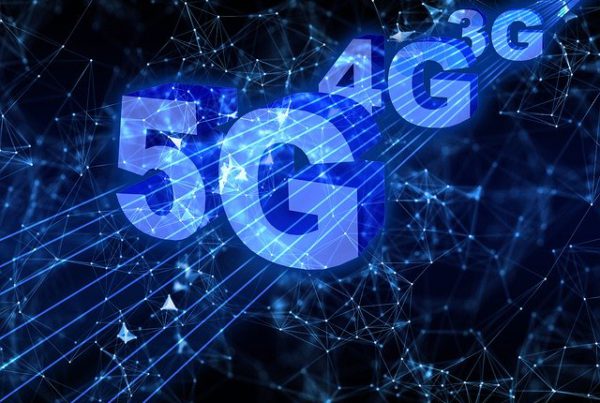The telecom industry is, by and large, fiercely divided on whether Over-the-Top (OTT) players have sounded the death knell for SMS or not. One faction of experts has already written off SMS as a “has-been” technology. In all fairness (allow me to play the Devil’s advocate here), reports released by several noted research firms substantiate their stand.
RIP: SMS?
Sample this-according to a survey conducted by mobilesquared between July-September 2014, four of five (81 per cent) mobile network operators cited decreasing revenues on traditional telecom offerings such as Person-to-Person (P2P) SMS as their most pressing concern. The survey of more than 50 international MNOs showed that one in three (32 per cent) respondents witnessed a reduction in P2P traffic over the last 12 months. The reason for this decline is simple enough-mobile operators are losing their locus standi as customers are switching to OTT messaging platforms. In a purely numbers-centric game, why wouldn’t a customer opt for a free service, as opposed to a complicated bundled offering with (more often than not) several hidden charges?
Bundling services and beyond
Of course, operators haven’t let the grass grow under their feet in this scenario. Instead, they have taken to aggressively bundling their messaging services into cheaper deals for customers. The catch, though, is that the average revenue per user from messaging has been severely and adversely impacted and, subsequently, so has total revenues.
Analysts do think differently!
Before we begin writing an obituary for SMS, though, (yes, I’ve switched sides), let’s flip the argument and take a closer look. Batting for this space are Deloitte and Ovum, who have stated that the SMS industry will remain healthy in most markets, at least for the next few years. In fact, Deloitte recently predicted that globally, revenue from SMS will continue on the upswing until at least 2017, generating far more money than instant messaging applications. Ovum echoes that prediction by claiming that text messaging revenues will grow at 4 per cent through 2016 before beginning to decline.
The last part of that sentence sounded tricky and let me explain why. In a nutshell, there is little doubt that OTT players and their plethora of social messaging applications have dealt a blow to the world of P2P SMS. Here’s the catch, though, these research firms didn’t have P2P SMS in mind while predicting that all is well with SMS. Enter Application-to-Person (A2P) messaging. Simply put, these are messages sent between users and applications.
Without making it sound like A2P messaging is a panacea for the SMS industry, let’s look at a few facts and figures. To quote Ovum, the next few years “will mark a golden age for A2P SMS,” with the number of global A2P messages increasing from 1.4 trillion in 2013 to 2.19 trillion by 2018. Likewise, Juniper Research’s crystal ball estimates that A2P revenues will grow from $55 billion in 2013 to $60 million by 2018, while instant messaging traffic will generate only $3 billion by 2018 despite increased usage. No small numbers, these!
A2P messaging has already hogged the limelight
Think about it-flight booking confirmations from the travel portal you made reservations on, real-time route updates from the taxi you just booked, promotional offers from your favourite offline store and a discount code from your favourite online one. Password resets and service activations from your bank and feedback and quality ratings for your car’s last service check. All examples of A2P messaging! In short, major enterprise verticals such as banking, financial services and insurance (BFSI), entertainment, tourism, retail, marketing, healthcare and media are pulling out all the stops to squeeze A2P SMS to the last drop.
Let’s break it down further. According to a report published by Transparency Market Research, customer relationship management (CRM) services are the largest revenue contributing application segment of the A2P SMS market. What will further boost this space is the fact that the trinity of application developers, marketers, and brands are together utilizing A2P SMS to strengthen their customer base. This entails all the routine tasks of updating their users with breaking news, campaign perks, location-based opportunities, and other important information.
OTTs and the A2P question
The point is that A2P isn’t a new phenomenon. All eyes are on it because every enterprise worth its salt has realized that it enables them to easily reach large, targeted audiences of every age, demography and type of handset in an economical manner. In fact, SMS itself is so easy and convenient to access that this simple fact betters the chances of an A2P SMS being read more often that many other forms of communication. To illustrate, mBlox states that 95 per cent of SMS-based messages are opened, in comparison with just 11 per cent of emails. The bigger picture is this-A2P SMS has tremendous potential to boost the SMS industry as a whole.
But, wait, what makes A2P SMS invulnerable to OTT players? Now, this is an interesting bit. Drum roll, please, the common opinion is that betting the farm on OTT, on the basis of its impact on A2P is a step too far. Why, because OTT messaging services are severely restricted in terms of interoperability. For example, an OTT service can only deliver a message to another device that has the same application. So, you can’t deliver a WhatsApp message to another phone unless your friend has WhatsApp enabled, too. Similarly, you can only use Apple’s IM if you are using an iPhone. Another minus is that OTT messaging can’t be used to solicit or spam commercial services. If you are a business wanting to market to consumers using OTT, there’s a bright red flag right there! And, perhaps the most ironic- OTT players themselves are using A2P messaging extensively for services like two-factor authentication for account verification or security!
Existing grey areas
Now, while I’ve painted quite a rosy picture of the virtues of A2P SMS, there are a few grey areas as well. The reasons why operators haven’t been able to leverage the potential of this medium to the fullest deserve a bit of attention. To begin with, the technology itself has been plagued by spam for quite a while now and some operators have, as a result, discouraged or blocked traffic in an effort to reduce call-center costs and other outlays. However, the realization of how useful A2P SMS really is is slowly dawning on operators. The net result is that they are beginning to attempt to forge partnerships with players that specialize in identifying questionable traffic and block spammers as quickly as possible. So, to take advantage of the benefits of A2P SMS, operators are following a three-step plan: consolidating A2P services; handling progressively more wholesale relationships and handling the increasing amount of business traffic that previously bypassed them or was handled by the international aggregators.
Wait, there’s more. Telecom operators, there is no escaping it. To manage the high volume of cross-platform messages bought on by enterprises extensively utilizing A2P SMS, you must dip deeper into your pockets to invest in infrastructure that supports this tidal wave of messaging.
Net, net, the bottom-line is clear-analysts are firm on the fact that A2P won’t save revenues from SMS in the long term because the uptake of smartphones will only increase, implying that IP-based messaging systems usage will rise in tandem. For the next few years, though, A2P SMS traffic will surge. Watch this space for more.






